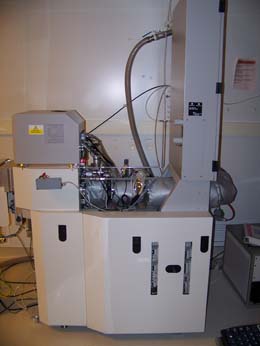PECVD (Plasma Enhanced Chemical Vapor Deposition)
Service Line: 02 Material Deposition and Etching

PECVD (Plasma Enhanced Chemical Vapor Deposition)
The Surface Technology System (STS) Plasma Enhanced Chemical Vapor Deposition (PECVD) System is used to deposit a wide range of inorganic and organic, doped and undoped films. For silicon-based films, the STS PECVD system is compatible with either silane or TEOS-based precursors. The STS PECVD system will accommodate substrates as large as 150 mm in diameter. The system is capable of high deposition rates without compromising film properties. The STS system is outfitted with the optional mixed frequency RF plasma source to control or “tailor” as-deposited film stress. Controlling or reducing film stress allows the production of thick (microns) films. These thicker films are suitable for the fabrication of planar optical waveguide and cladding layers.
PECVD is performed in a vacuum chamber at temperatures ranging from room temperature to ~400 degrees C. PECVD is a technique in which one or more gaseous precursors are used to form a solid insulating or conducting layer on the surface of a substrate. The chemical reaction is enhanced by the use of a vapor containing electrically charged particles or plasma. The plasma environment provides high deposition rates at lower temperatures, which is key to certain applications.
Manufacturer: STS
Contact:
Scott Williams
704-687-8126
scotwill@charlotte.edu
Tool Location:
Grigg Hall, Third Floor Room: CleanRoom Bay Number: 5